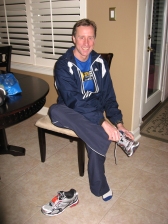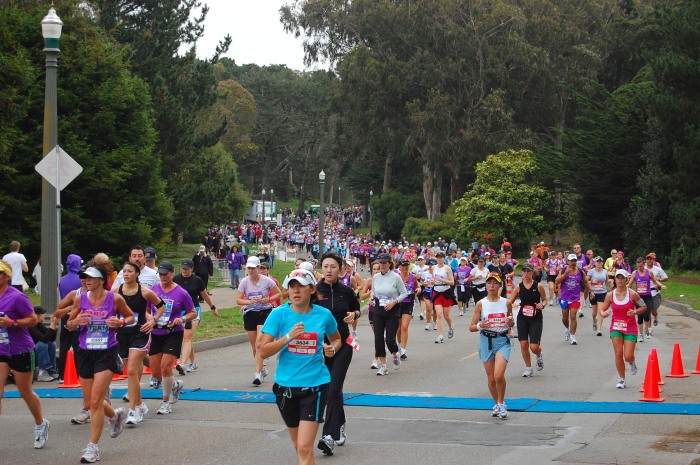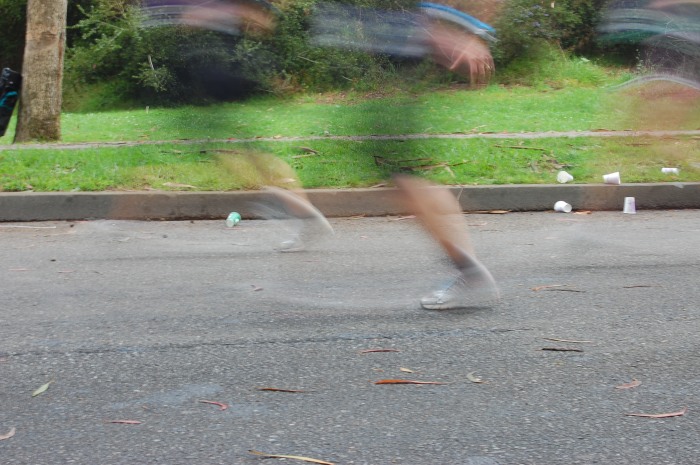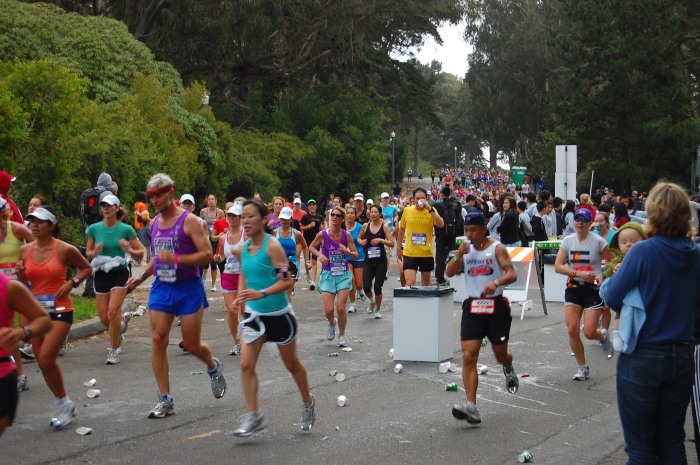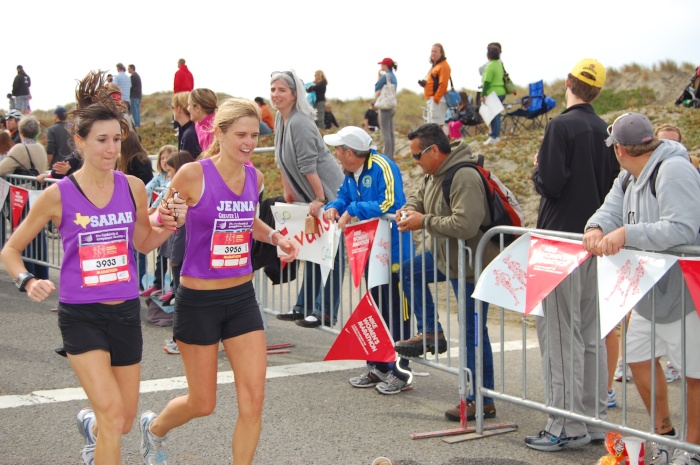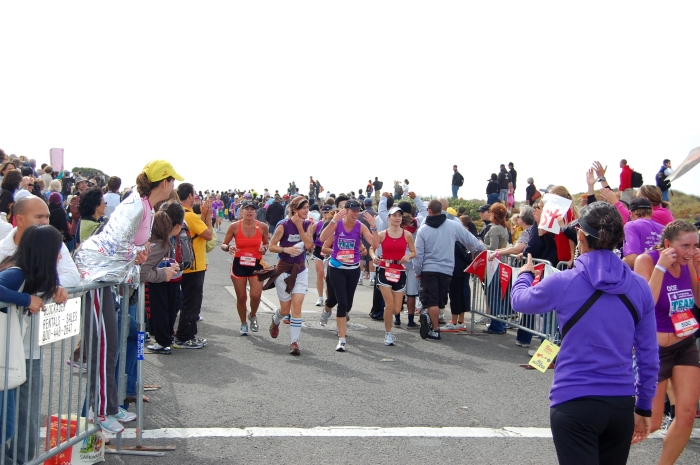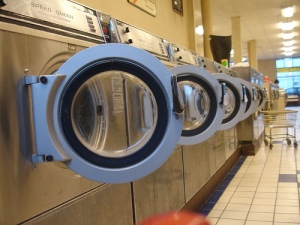
The California International Marathon is a traditional west coast launching pad for runners vying for a spot in the Boston Marathon. Many folks, myself included, have taken advantage of the fast, net downhill course which wends its way from Folsom to the Capitol in Sacramento to punch their Patriots Day ticket.
My last training run in the bank, I threw my kit together and headed to Sacramento. Hit the expo and later met up with dailymile friends Caleb M. and Chris S. for an early pre-race dinner at Pyramid Alehouse topped off with one of their tasty, seasonal Snow Cap Ales. Good times catching up and talking about race strategy and expectations. Using good natured one-upsmanship to motivate one another they had both trained hard in a quest to turn in a time in the low 2:30s. With the new rolling registration for Boston in mind my goal was something in the 3:19 to 3:14 range which would put me in one of the early registration pools.
Race day dawned cool and calm with no hint of the winds that had been buffeting the state all week. Perfect race day weather. After milling about in the warmth of a hotel lobby, I piled onto a bus with lots of other excited runners and had a pleasant conversation with my seatmate all the way up to the starting area in Folsom. Dawdled on the bus a bit to soak up every last bit of warmth before heading out into the familiar swirl of the potty/sweats bag truck/start line maelstrom. I love the start of a big race like this—the cheers rising up from the runners as taper-tamped, pent-up energy is released; the arcs of discarded clothing flying through the air; and the arrhythmic beat of thousands of feet slapping the asphalt. Before me 26.2 miles of car-free streets devoid of meandering pedestrians and overzealous yapping dogs. The time had come to make a substantial withdrawl from my mileage bank and run a smart race.
Now, the first rule of marathon running is you don’t talk about marathon running. The second rule is don’t go out too fast which is difficult at CIM. The course trends downhill and starts off with a long, discipline-busting downhill. Soon, however, you have a chance to reconnect with your pace plan as you encounter the first of many of the race’s rolling hills. Another one of my early pacing problems involved missing the first couple of mileage markers. Not only did I not see the signs for miles 1 and 2, but I also did not hear the familiar chimes of multiple Garmins announcing the split. I’m certain I ran my first mile faster than my first split of 21:31 would indicate.
The miles clicking by I noticed I was passing a lot of runners, and my splits (6:50, 7:04, 7:04 for Miles 4 through 6) indicated I was setting myself up for a late stage, cramp-plagued meltdown. For me being out in front of the 3:10 pace group at mile 5 is a boneheaded move. Just then I noticed two fast looking fellows (don’t judge, you’ve thought the same thing, too) who were keeping up a pace I thought I could manage. I tucked in behind them and let them pull me down the course using their tremendous pace discipline to help me maintain metronomic splits ranging between 7:00 to 7:16 from miles 7 through 21. With my wee pace group set, I focused on my nutrition plan sucking on GU Chomps, taking water at almost every aid station (twice opting for the electrolyte drink to stave off those leg cramps), and two gels in the later miles after the half marathon mark.
As the race wore on I couldn’t believe I was still keeping up with my mini pace group. Each time they surged ahead a little I easily closed the gap and stayed with them. And, as the distance remaining dropped to single digits, the 3:10 pace group still hadn’t passed by. It was beginning to believe it might be a special day. I had hoped to stay with my group through the finish so I could thank them for helping me, but at mile 20 the duo took off leaving me to bring it home on my own. I flew up the last uphill on the bridge near mile 22 and headed onto the tree-lined streets of Sacramento enjoying the energy of the surprisingly large amount of clapping, waving, boisterous spectators.
By now I was feeling a bit of discomfort in my hips and feet reflected in the slight upward trend of my splits, which while higher remained remarkably consistent—7:22, 7:20, 7:20, and 7:21 for Miles 22-25—but I sped forward picking off a few more runners as we headed to the Capitol. Rounding the final turn I kicked past one last runner and bounded across the finish line. Stopped my watch and looked down to see 3:08:10, smashing my previous PR by a full ten minutes and giving me plenty of cushion for the new Boston qualifying requirements. I was stunned; I had never before run a marathon without running multiple miles at over an 8 minute per mile pace, and now I had finished one keeping the pace under 7:21 throughout. Elated, I ran over to greet the fabulous Layla B., volunteering for medal duty. She gave me a great, ”You’re finished already?!” along with a big hug.
And with that my race day was finished, and training for my next challenge had begun.


